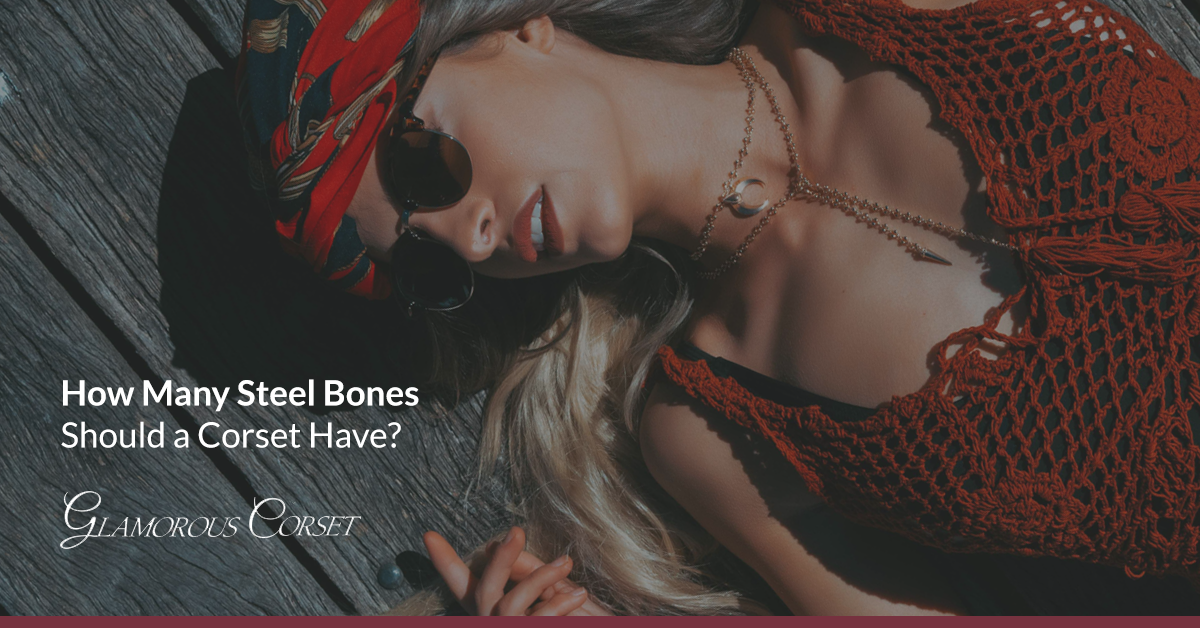Blog
How Many Steel Bones Should a Corset Have?
There are definitely occasions when more is better. For example, it’s always nice when you get an unexpected bonus at work, or when you add a new bundle of joy to your family. Then there are times when this old adage simply doesn’t hold up.
When you’re suffering an ant infestation, you definitely don’t want more of the little buggers crawling through your pantry. Many of us would also be happy to have a little less hair on our legs to shave, especially when we sleep through the morning alarm.
What does any of this have to do with corsets? There is a common misconception that corsets with more boning are better, but in practice, this isn’t necessarily the case. For centuries, corsets have been designed to support and compress the torso, and in that time, corsetiers have certainly learned a thing or two about optimizing.
While double the boning might sound smart, you don’t necessarily want to pay for double the steel when half will deliver the same benefits. How many steel bones should a corset have? Here are a few things you should know.
The Basics of Boning
To be honest, there is no consensus on the precise number of steel bones a corset needs. It simply must have enough to provide the support and compression required. The number of bones may depend on the style of corset (waspie versus longline, for example), the size of the corset, and the preferences of the designer.
That said, the number of bones is typically dictated by the number of panels the corset features. There are usually two bones at the busks (one on each side), four bones at the laces (two on each side), and one bone for each seam between panels. So, if you have eight panels, for example, there would be six bones, for a total of twelve in the corset, including busks and laces. (Lots of new terminology? Check out Parts of a Corset: A Quick Rundown of Corset Terminology to learn more.)
Double boning simply involves adding a second channel at each seam, so there are two bones between panels instead of one. In the aforementioned example, this would result in twelve bones between panels, for a total of eighteen in the corset.
The Importance of Channel Placement
Do you really need extra boning? Do double boned corsets deliver greater strength and durability? It’s possible, but not to a noticeable degree. There’s no denying that additional boning could increase the support and compression of a garment, but the placement of the boning is crucial.
If you really want a more supportive garment, what you need is not just more boning, but boning that is evenly spaced. In other words, you need more panels with single boning structure, rather than double boning that only minimally improves cinching (if at all). If you feel like you really need twelve bones between panels, try a corset with fourteen panels instead of eight.
To Double or Not?
At some point, adding more boning isn’t going to deliver more value. You’re just going to pay more for a corset that offers essentially the same benefits as one with half the bones. As always, you should try out a variety of styles and features to find the corseting options that best suit your needs, but don’t assume just because a corset has more bones it’s going to speed your waist training or last longer.
Stay up-to-date with weekly blog posts, waist training tips, and the chance to win one of our monthly corset giveaways, like us on Facebook & subscribe to our mailing list today! Want to find the perfect steel boned corset? Shop some of our favorites: underbust corsets, overbust corsets, corset dresses. You can also shop our corsets by material: cotton corsets, denim corsets, leather corsets, mesh corsets, pvc corsets, and satin corsets.

My name is Rachel, I am the owner of Glamorous Corset, a small business founded by me in 2010. Back In 2005, I was in a car accident that left me with a herniated disk. Much to my surprise I learned steel boned corsets were beneficial to several medical injuries including mine. I was always intrigued with corsetry, their history and their beautiful aesthetic. I love sharing knowledge about corsets, educating my wonderful readers and breaking the negative stigma related to corsetry. In combination with my years of research and personal experience I hope my articles are useful and can help anyone who has struggled with some of the same things I have. More about me…


